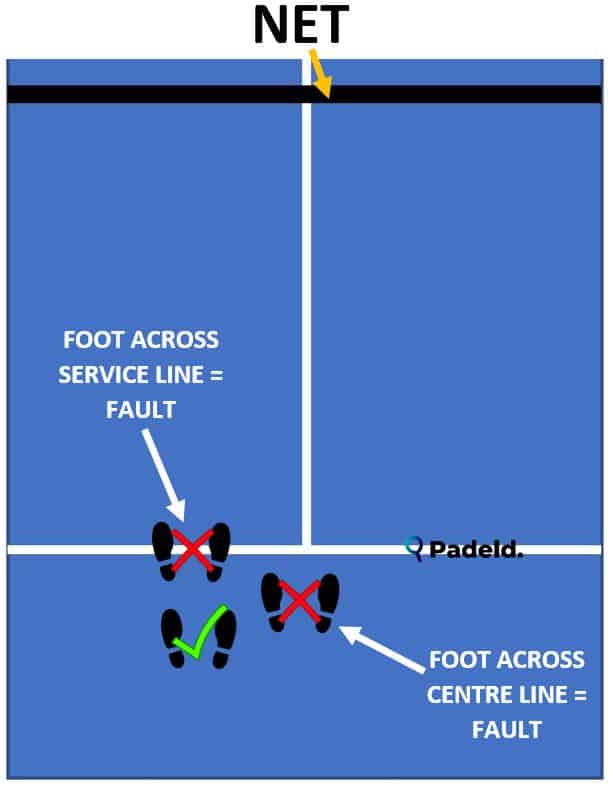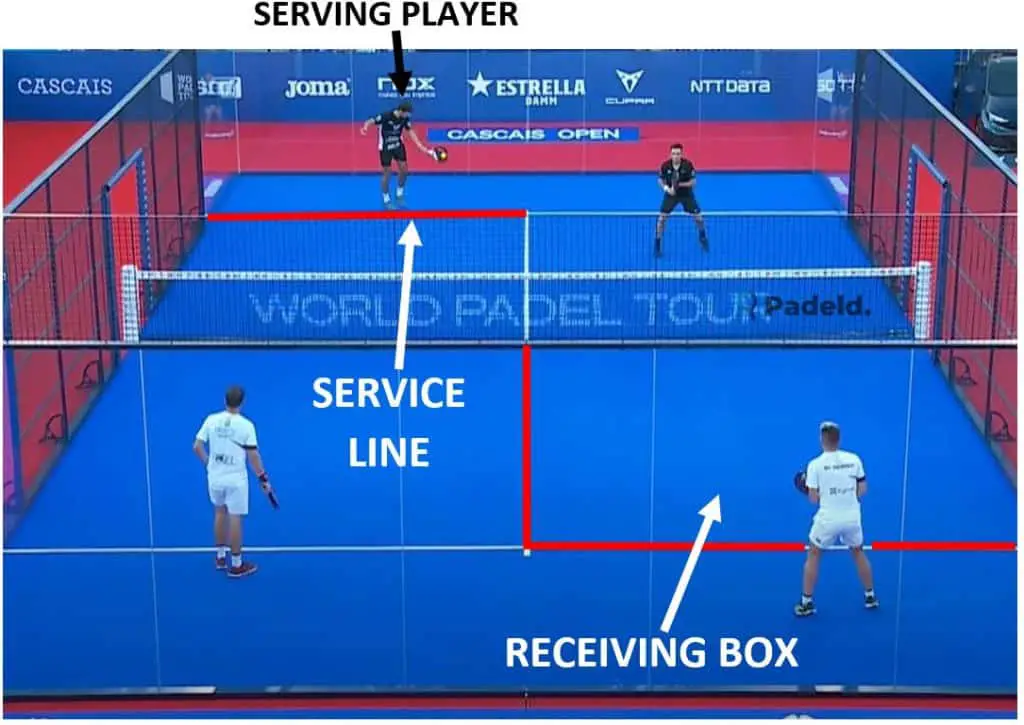In padel, the serve is an incredibly important part of a point – just like it is in most racket sports! Again, just like most other racket sports, the padel serve has many rules that relate to it, and this can make the sport complicated to follow for first time viewers. The serving rules in padel govern things like:
- Where the ball can be hit from
- Where you need to stand when serving
- The way you are allowed to hit the ball
- How many times the ball needs to bounce before it is served
- Where the ball must land
As you can see, there’s quite a bit to get your head around! Today I’m going to explain how many serves a player gets in the game of padel, as well as detailing what happens if you exceed that number of serves. In addition to that, I’ll also be explaining what a good serve is, and what kinds of things may cause the umpire to ask you to serve again! If that sounds like something that you’re interested to learn about, then you’re more than welcome to stick around!
So, how many serves do you get in padel?
During each point, the serving player has a maximum of two attempts to deliver a valid serve. If the first serve is not valid, the server is allowed a second attempt. The second serve takes place from the same side of the court as the first. If the second serve is also not valid, the receiving duo will win the point.
If a serve is not deemed to be valid by the umpire, then it is declared to be a ‘fault’. Two invalid serves in a row are classed as a ‘double fault’. If either the first serve or the second serve are valid, then the players on the opposite side of the court will need to return the serve so that the rally can begin.
At this point I’m sure you’re wondering what exactly is counted as a valid serve in padel, as well as what may cause an umpire/referee to say a serve is invalid – and those are great questions to ask! In order for a serve to be considered valid in padel, ALL of the following criteria must be satisfied:
- The serving player must bounce the ball on the ground behind the service line in front of them before hitting the serve
- During the serve, the serving player must not touch the service line in front of them with their feet. They must also ensure that their feet don’t cross over the centre line of the court.

- When the serve is hit, the height of the ball must be at waist level or below of the serving player
- When the serve is hit, the serving player must have at least one foot in contact with the ground
- After the serve has been hit, the ball must land in the receiving box that is diagonally opposite the serving player on the opponent’s side of the court. If the ball lands on the lines that surround the edge of the receiving box, this is also counted as ‘in’.

- The serving player must not walk, run or jump whilst in the process of hitting the serve. However, the serving player is allowed to make small foot movements that do not dramatically affect their body position as they hit the ball.
- The serving player must make contact with the ball when they attempt to hit it. If they swing their racket and miss the ball, the serve will be counted as invalid
- The serving player must not hit themselves or their partner with the ball. This also includes any equipment that either player is wearing/carrying
- The ball must not touch the metallic fence on the opponent’s side of the court after bouncing once (but before the second bounce) in the opponent’s receiving box
- If out-of-court play is not permitted, the ball must not land in the receiving box and bounce out of the court through the access point. If out-of-court play is permitted, then this rule can be disregarded.
If the serving player breaks one of the 10 rules of the serve that are listed above, then that serve will be declared a fault by the umpire. The serving player will then have to perform a second serve. If this serve is also a fault, a point will be awarded to the receiving team.
Conclusion
I hope you found this post helpful and that you got all of the information you were looking for! By serving well, you can ensure that you get off to a good start in all of your service points. If you serve poorly, you’ll give away plenty of free points and give your opponents a confidence boost as a result! This is something we should all be trying to avoid!
If you’re wondering where you should stand to receive a serve, you should click here to read one of my other posts covering that! I’ve also written a post detailing what shots you can play to return a serve, and you can read that by clicking here! I’ll have plenty more technical tips being added to the site soon – so keep an eye out for those!
